Digging for the Deeper Story in Yunnan's "Tibet Disneyland"
I’ve recently returned from an 11-day trip around northern Yunnan, flying into Lijiang and doing a big loop north to Shangri-la, north to Dêqên County, west to Nujiang’s Gongshan County, south to Fugong County, south to Lushui, east to Dali, and finally back north to Lijiang. I’ll be slowly posting essays and content from this trip and the people I met in the coming weeks, starting with Shangri-la. Please enjoy!
Arriving in Shangri-la
I typically wouldn’t choose to stay in a Chinese “ancient town” - no matter the city or province. I’ve had too many uninspiring experiences with ancient towns (and “ancient cities”…and “old streets”…) to put much faith in the enjoyability of such experiences and their living accomodations. But arriving in grey, overcast Shangri-la, it didn’t seem like I had much choice. Aside from the old city neighborhood - called Dukezong (独克宗) - there were hardly any attractive places to stay in town. From my online searches, virtually all the new, comfortable, well-rated guesthouses were located in the old city.
That’s how I ended up navigating my large rented SUV through Deukezong’s persisently drizzly, narrow, cobblestone-lined streets, squeezing between pedestrians, vendor stalls, and parked motorcyles with bare inches of clearance on each side, cursing my foolishness for not taking advantage of the larger parking lot I had passed outside the old city. Every time I approached a tight fit, I tensed up, breathlessly awaiting some scraping metal noise that would signal I could kiss my rental deposit goodbye…but it never came…as my oversized vehicle slowly wriggled its way throughly increasingly unlikely gaps.
Finally, I found my guesthouse and pulled into the small private parking lot behind the building, where guest vehicles were carefully slotted in like Tetris bricks. Exiting the vehicle and stretching my tense neck muscles, my nostrils were invaded by the crisp smell of rain - followed immediately by the unmistakable musk of farm animal. Directly behind my chosen parking spot, an open-walled hut penned a massive white bull yak, snorting softly as it munched on a mound of grass trimmings. I’d arrived.
But where had I arrived, exactly? This was Shangri-la, capital of the Dêqên (Diqing) Tibetan Autonomous Prefecture (迪庆藏族自治州) northernmost prefecture of southwestern China’s Yunnan Province, surrounded by mountains in every direction, butting against Sichuan to the east and Tibet to the north. This was the first stop on my big planned loop tour of northern Yunnan.
It wasn’t always called Shangri-la - its historical name was Zhongdian, (中甸) which it retained until 2001 when the name was formally changed to better appeal to tourists, evoking the mythical land of paradise described in the 1933 novel Lost Horizon. The tourism play was successful, and now Shangri-la receives a deluge of domestic tourists during national holidays, along with a healthy flow at most other periods too, drawn by the stunning natural scenery and the charms of the local minority cultures - chief among them Tibetan.
Dêqên Tibetan Autonomous Prefecture comprises just three county-level units in total: Shangri-la (the capital city), Dêqên County to the north (confusingly sinicized as 德钦县, using a different character versus the name of the Prefecture despite referring to the same Tibetan word) and Weixi Lisu Autonomous County to the west. All three county-level divisions are mountainous, with transit only possible along the winding roads following the major rivers running north-to-south. Traveling west-to-east is nearly impossible in northern Yunnan, as it typically necessitates traversing a mountain range. Shangri-la has its own (very small) airport and is connected via rail and expressway to Lijiang City, several hours to the south, while the rest of the prefecture is not yet connected to the national expressway or train systems.
Shangri-la is up at 3200 meters of altitude - still low compared to Tibet or Qinghai - but nothing to sneer at either. “Breakfast, air conditioning, and oxygen supply in the rooms” were carefully listed in my guesthouse’s amenities. I didn’t think I’d need it, but was glad to have it nonetheless. I’d already had a dull headache since waking in Lijiang that morning (at a mere 2400 meters of altitude) which probably wouldn’t be going anywhere soon, considering I’d ascended nearly another kilometer on the two-hour drive north to Shangri-la today.
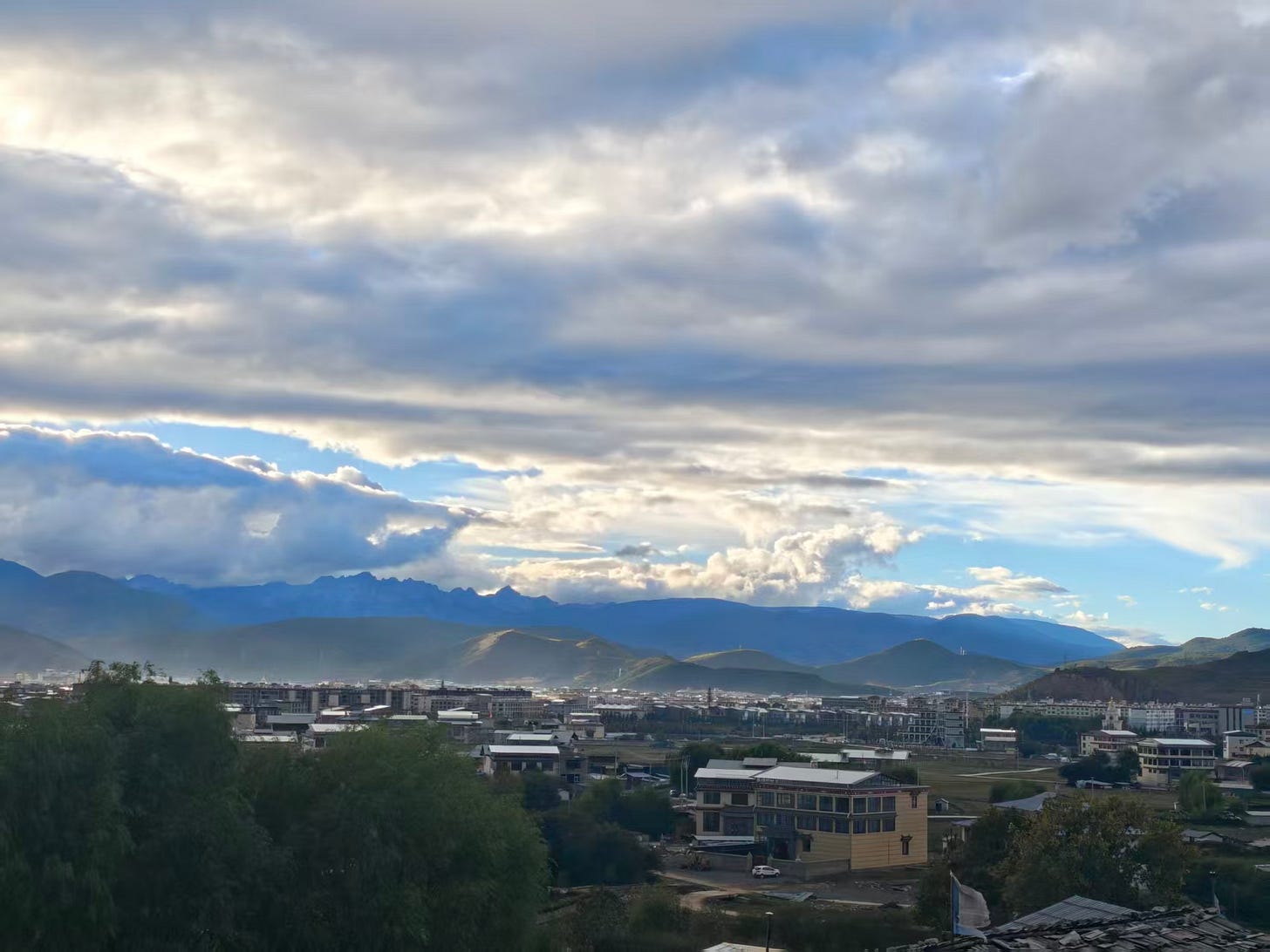
That afternoon, I wandered the ancient city, but I found little to tempt me. It was the last day of the national holiday, and most of the tourists were on their way out, but there were definitely still a few more people around than usual. Much of the city isn’t ancient at all, but modern construction dressed up to look old (a massive fire in 2014 destroyed many of the the authentically old buildings, though sparing the key tourist attractions like the big temple complex in the center of town). The dining options were limited…nearly every resturant was offering yak hot pot with yak butter tea - which I don’t dislike but I’d already had once on the trip and didn’t need again. However, there were glimpses of authenticity here and there: an apparently older wooden building hidden down a side street…a wrinkled Tibetan grandmother in worn, faded traditional garb selling steamed corn and momos on the side of the street. No one paused to stare at me - foreign tourists are clearly a common-enough sight here.
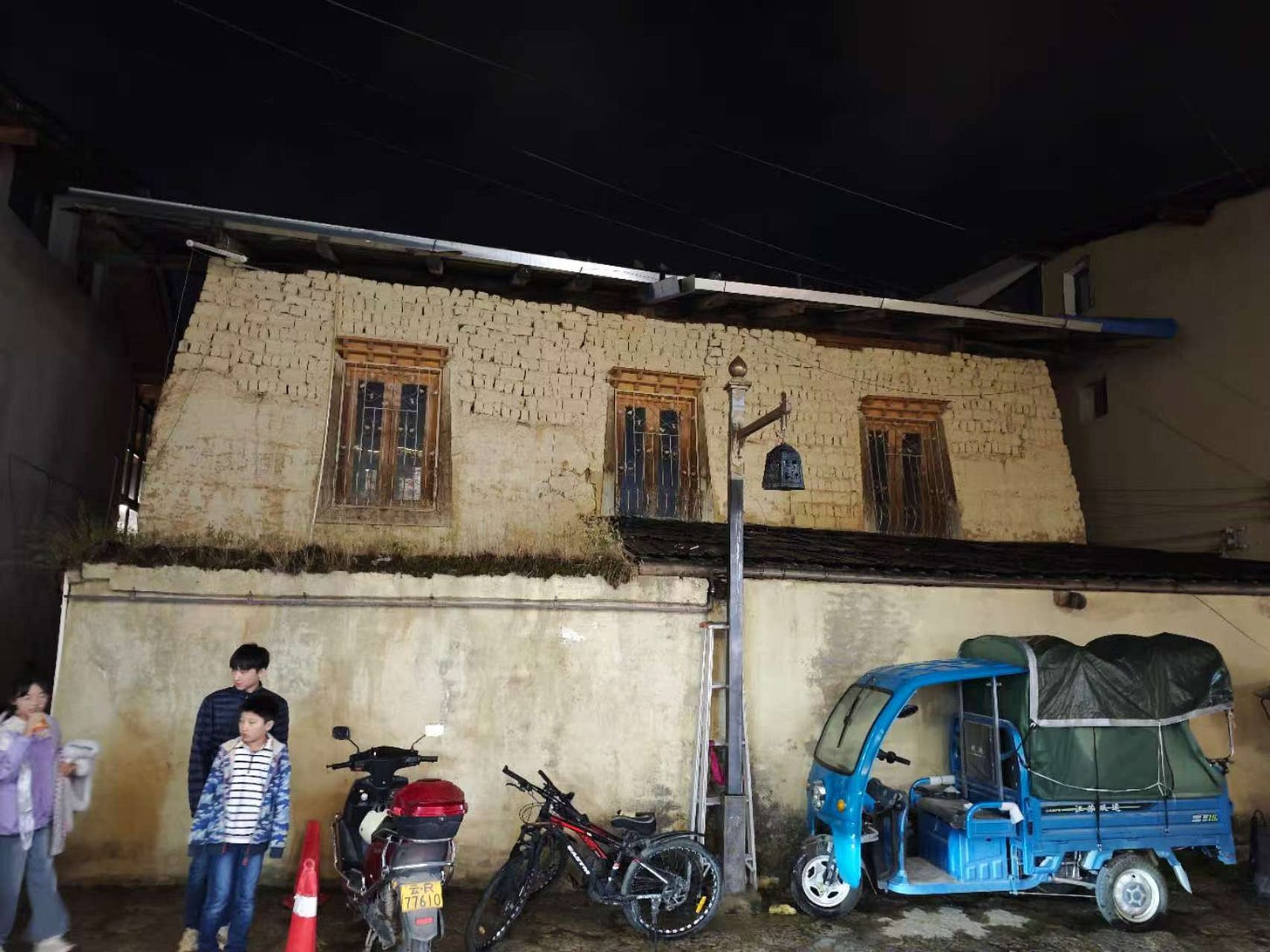
Besides restaurants, the most common type of vendor was travel photography (旅拍) shops. For a low price, tourists could rent Tibetan outfits and have the in-store cosmeticians fix up their hair and makeup, re-emerging onto Shangri-la’s cobbled streets as princes and princesses, like they’d stepped off the set of a period drama. For an additional fee, a photographer could be hired to shepherd the newly-minted Tibetan royalty around a series of prime photography locations with predetermined shots and poses against desirable backgrounds. Instant social media approval awaits. I found it all very dull. Shangri-la is a Tibetan-themed Disney cruise and and I’m not the target audience. Fortunately, there were other attractions outside the city.
Conversation at the Guesthouse
“This travel photography trend is quite recent” the front guest attendant at my guesthouse told me as we chatted the next day. He was talking to me while multitaking, playing an MMORPG on the giant curved computer screen behind the front desk. He’s a very years older than I am, wearing a puffy jacket with messy hair and glasses. He looks like a gamer. “It really only started here during the Covid years, but then it grew really rapidly. Now it’s a huge industry”.
I had just returned from my day trip to Potatso National Park, a 5A-rated tourist attraction about 30km from the city center. We had hiked around a gorgeous alpine lake and driven through rural Tibetan and Naxi (another ethnic minority native to the area) villages to take pictures, before returning to the hotel.
For me, it had been a perfect day. Shangri-la’s scenery was the first place in China that honestly reminded me of the New England fall scenery in my home state of Maine. The endless green blankets of spruce and fir forests - speckled with the bright red and orange leaves of deciduous trees changing color in the crisp autumn air - was unexpectedly quite nostalgic.
“The travel photography shouldn’t bother me, because it’s not affecting me at all” I replied to the front desk attendant. “But to be honest, I still find it kind of annoying. Don’t they find it so superficial…running around this town taking selfies, pretending to be Tibetan princesses? I have talked to ethnic minority people in several places in China, and they tell me they don’t care if tourists like to dress up in their ethnic clothing and do photoshoots - as long as they admire it, then it’s fine. Is is the same here? The locals don’t mind?”
“Yes, it’s fine here too. Well, I’m not a local, but I’ll tell you from my understanding.”
“Oh? Where are you from?”
“I’m from Chuxiong, close to Kunming. But my wife is local.”
Ohh, Chuxiong? The Yi Autonomous Prefecture? (楚雄彝族自治州) Are you Yi?” (彝族).
“Er…no. Actually I’m Hani Ethnicity (哈尼族). There are also Hani people in Chuxiong.”
“Ohh. Hani. I don’t know much about your ethnicity, except that I sometimes see Hani dishes on the Yunnan resturant menus. So your wife is from here…Tibetan? What does she think about the tourists wearing Tibetan clothing?”
He chuckles. ”Local people don’t have any concern about the tourists wearing Tibetan clothes…except in one case: if they wear it wrongly. For example, sometimes the outifits the travel photography businesses provide are not authentic. The sleeves are the wrong length, or they have too many buttons, or the clasps are in the wrong place. Actually, there is a proper way to wear this clothing, for a big celebration, like a wedding, or a holiday. Most of the people running the travel photography stores don’t know the right way to put on the clothing. Not even local people necessarily know how to do this - you need an expert on the traditional clothing. For example, when we got married, my wife had to go to a expert shifu to arrange her traditional clothing and do her traditional makeup, so it is correct.”
“Ohh I see. So they don’t mind the idea of tourists wearing the clothing, but they might be annoyed if it is done wrongly?”
”Yes, that’s right. And really, only the elderly people know the difference. The young people don’t wear it anymore, except for holidays. But in the villages, or up in the mountains, you can still many people still wear the traditional clothing. Here in the town, it’s only the elderly.”
This is not the first I’ve covered the topic of ethnic minority costumes for travel photography on this blog - see examples from Hunan and Sichuan. Although it still rubs me the wrong way, it’s hard to argue with the merits from an economic and travel consumption perspective, and I’m still yet to meet any local people who are against it, so I have no reason to change my perspective here.
“The people in the countryside around Shangri-la are more traditional?”
“Yes. Many of them still live in the old-style houses. Although now concrete houses are also becoming common.”
“I noticed in some the villages, the style of Tibetan building here is quite different from the styles I saw before in Gansu and Sichuan. Here the building has a big facade wall, with many rectangular windows, and very detailed woodwork on the backside. Each window has its own little roof, with peaked ridges. Maybe it’s some influence from Naxi arcthitecture. I never saw this in Gansu, which always had the red roof lines with the interlocking diamond motif.” I pulled out my phone to show him some pictures I had taken and he finally looked away from his game.
“Oh yes, this is the original, local Yunnan Tibetan style.” He nods and murmurs with approval. “Mmm, that kind of intricate woodworking is very expensive! This family spent a lot of money on their renovation. That’s very nice.”
“But now the style of Tibetan architecture that is popular here is this modern style from Tibet, which is also similar to what you saw in Gansu.” He points to the interlocking diamond motif. “This is a concrete home, not rammed earth. The governent encourages everyone to build this kind of house now”.
“These old houses are pretty, but they should be modernized. They don’t have bathrooms in the house, because traditionally this was a dirty function to keep outside the house. However, a benefit of the old houses is they are designed well for the weather…they use rammed earth construction instead of concrete, which retains heat very well in the winter. This kind of Tibetan stove” (he points to the small stove in our guesthouse’s lobby area) “it can keep the whole house warm.”
I pulled up more pictures from my trip in Jiuzhaigou the year before. “When I stayed at a Tibetan guesthouse before, they had this kind of stove…but it was much larger.”
”Yes, this is the kind for cooking for a family, especally when it’s very cold, so they can cook multiple dishes at the same time. Otherwise you can only cook one dish at a time, the first dish will be cold before you finish the last dish…haha.”
“I see. So…if you’re from Chuxiong, then Shangri-la must be quite cold for you? I see you’re wearing a down jacket right now. Honestly, this is quite comfortable for me, because i’m from a cold place too. It’s similar to my hometown.”
Chuxiong is at a much lower altitude - just 1700 meters or half as high as Shangri-la
“It’s way too cold! I hate it so much!”
”Then why don’t you go back to your hometown? No job opportunities? Maybe you could go to a warmer tourist place, like Xishuangbanna?”
”Actually, my hometown is not too bad - pretty developed now. But my family is here now. Also I’m not comfortable in the heat anymore either. Xishuangbanna is too hot!”
”Your kids go to school here? How old are they?
”The older one is 7, and the younger one is 2”
“How are the schools here?”
“Ahh…they’re okay. Of course they are not as good at some other places in Yunnan…more developed areas - even in Chuxiong they are better. But it’s more important for the whole family to be together. I don’t want to push them to study so hard if they don’t want to. If they like studying, then I will encourage them to do it more. But if they don’t like it, then I will not force them.”
“How is the tourism here? Was there any impact from the new railway?”
”The tourism economy is pretty good. Quite a lot of people come now, even when it’s not a holiday, because it’s so easy to come. Now it’s only 5 hours from Kunming to Shangri-la on the train. That made a big change.”
“Do you think the tickets are a reasonable price? Can normal people afford the train?”
”Sure…reasonable. The tickets to Kunming are 260 CNY. Before the train, you could take the long-distance overnight bus, and the tickets also cost 250 CNY. So it’s about the same price as before, but much faster.”
“I guess now that the weather is getting colder, the tourists will be fewer?”
”No, we also have many tourists in the winter, who come to see the snow mountains. And there is a new ski resort north of Shangri-la, on the highway towards Deqen County, that will attract tourists.”
“Dêqên County…is that the place that is being relocated?”
”Yes, they will relocate the city. The new town is basically constructed now, at Yeji Town, in Weixi County, and the people are moving there. Soon, the only people living in Dêqên will be tourists going to see Mount Kawagarbo (梅里雪山) and the people taking care of the tourists.”
Earlier this year, Yunnan provincial authorities announced the relocation of the entire 70k people in the county seat of Dêqên County to a new location due to unacceptably high avalanche and rockslide risk. This relocation is in-process now. I will cover this more when I talk to some people in Dêqên County.
“Oh, I’m planning to visit Dêqên County also. I wonder how the city will feel, with half the people already gone…”
”No one is happy to leave their home. It’s hard to be logical in that situation. But the rockslide risk is really very severe.”
”Yeah…makes sense. I thought maybe they made this plan after the story of the avalanche in Switzerland this year that buried a village.”
”Oh no, that’s been planned for a long time. They just finally started the relocation this year.”
“Okay, I see. I also hope to see the golden sunrise over the mountain while i’m there.” (on clear days, the morning sun lights up the peaks of Kawagarbo, giving it a golden crown-like appearance).
”Hah…don’t have too much hope to see the golden sunrise. They say whether you see it or not is up to fate. Now it’s the rainy season, so we have a lot of clouds and mist. Your likelihood of seeing it is low.”
“Yeah. That’s what I figured. But at least I will stay two days, so I will have two chances to see it. After that, I’ll go to Nujiang.”
”The road from here to Dêqên County is quite good and very beautiful. But the road to Nujiang from Dêqên County is not good. Be careful. There are many rockslides, and the road is often closed.”
”Yeah, thanks. I’ve checked my information online, and I know the road to Nujiang is closed from Monday-Thursday. So as long as arrive on a Friday-Sunday, I should be okay.”
”In that case, I recommend you spend less time looking at the attractions around Shangri-La and Dêqên County. You can come back to these places easily in the future, because the highway and airport is more developed. You can go straight to Nujiang County and spend more time there.”
”Thanks for the advice. I’ll do that.”
That’s it for my first post from Yunnan. More to come. Thanks for reading!

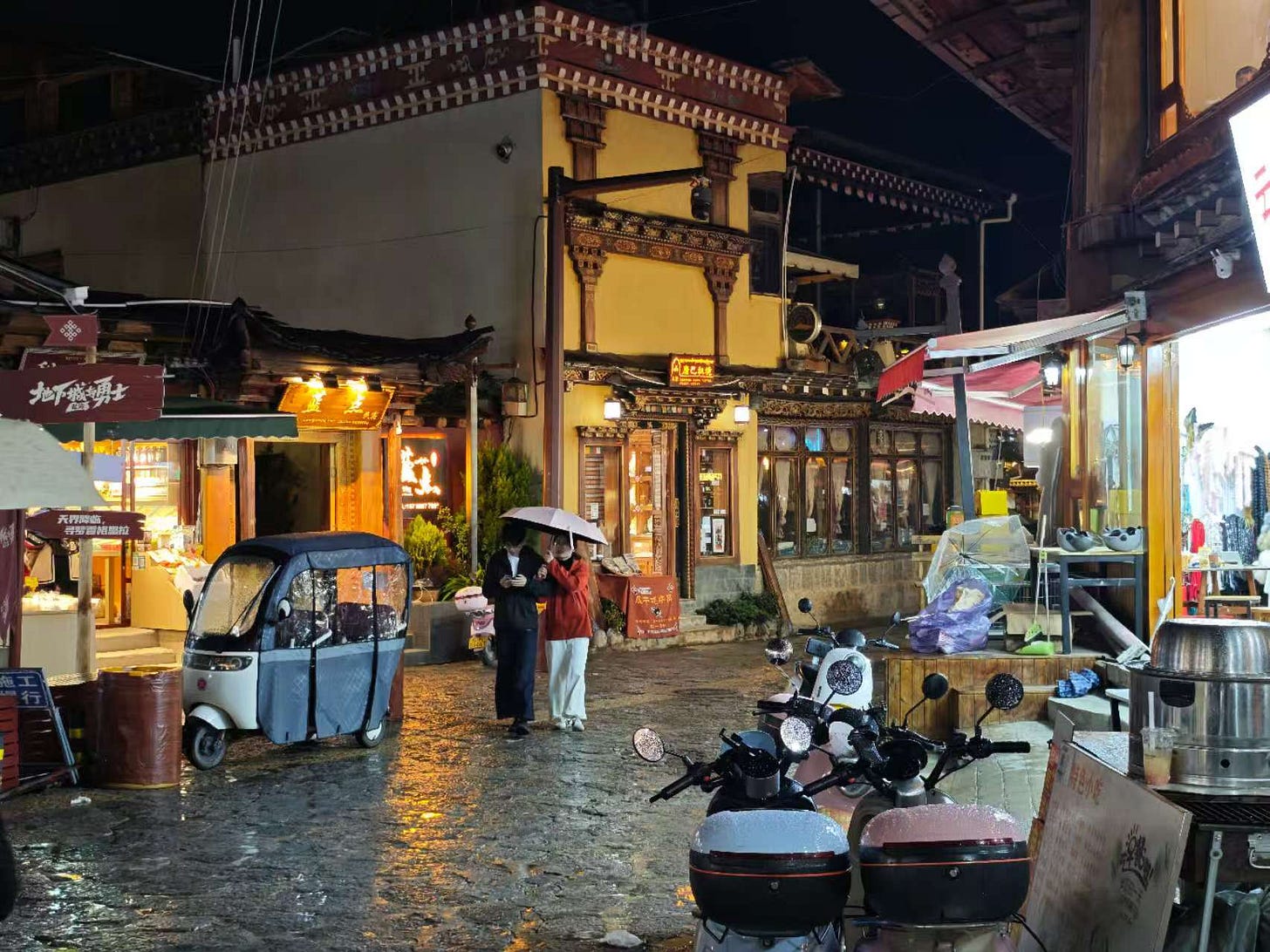
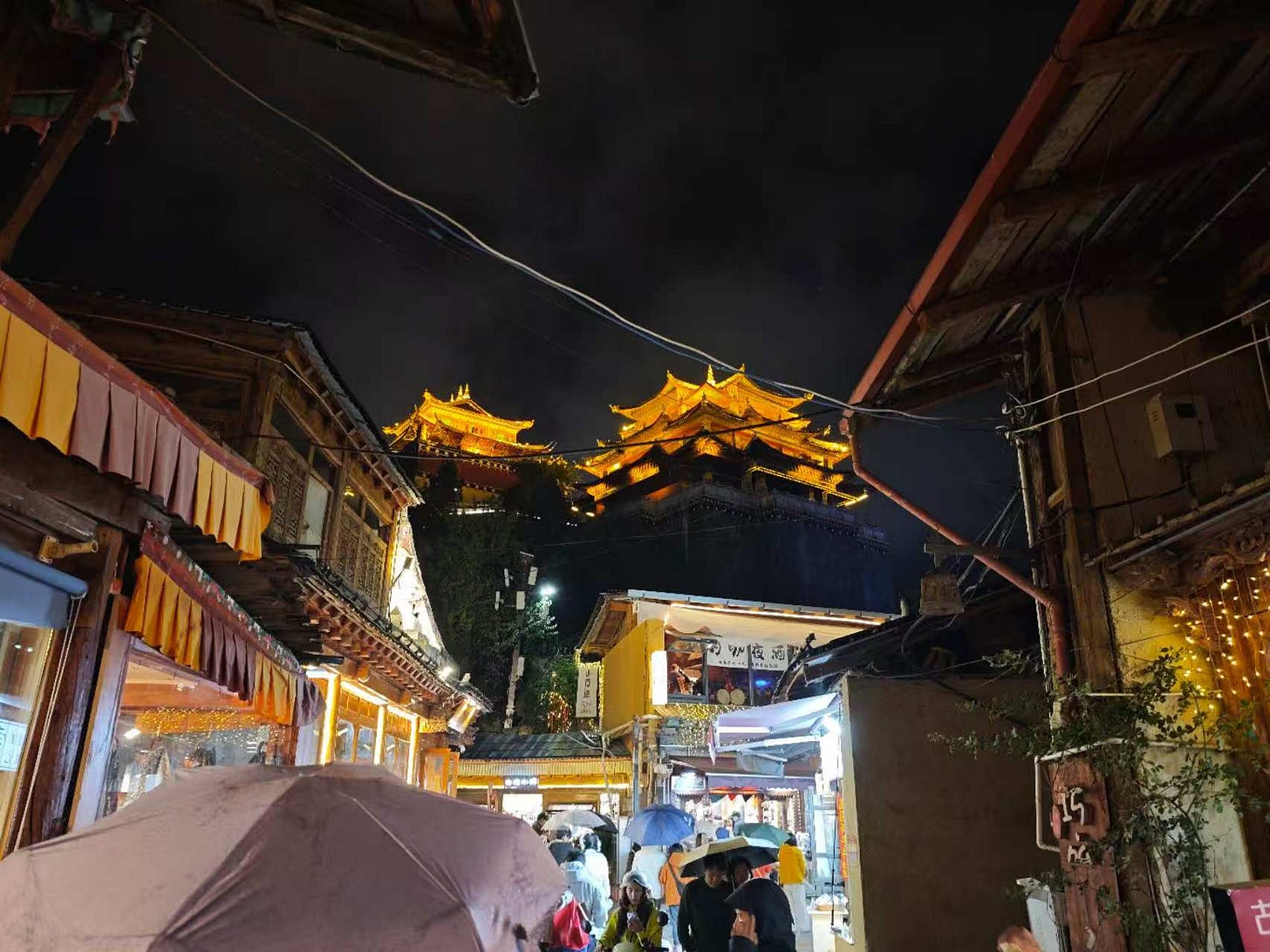
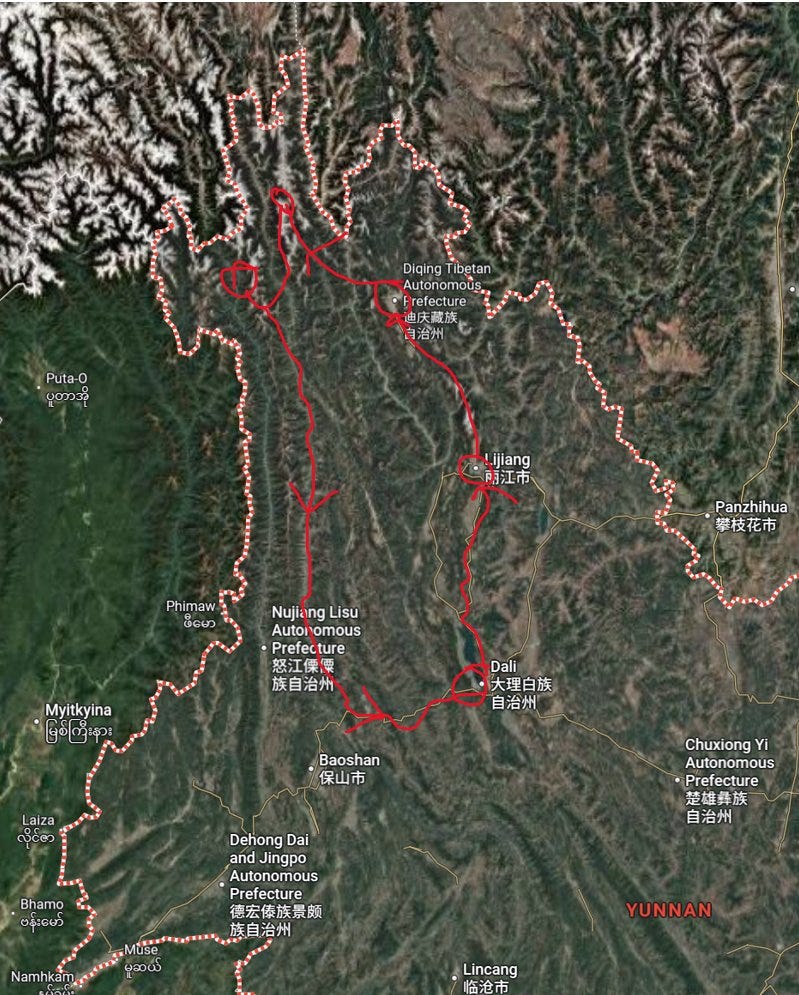
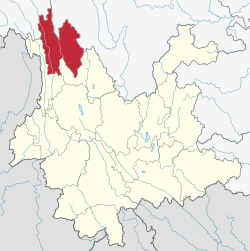
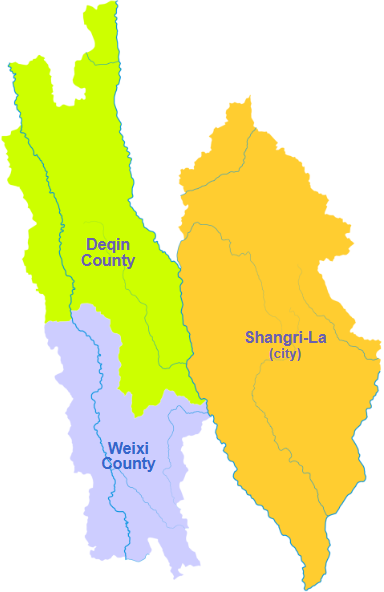
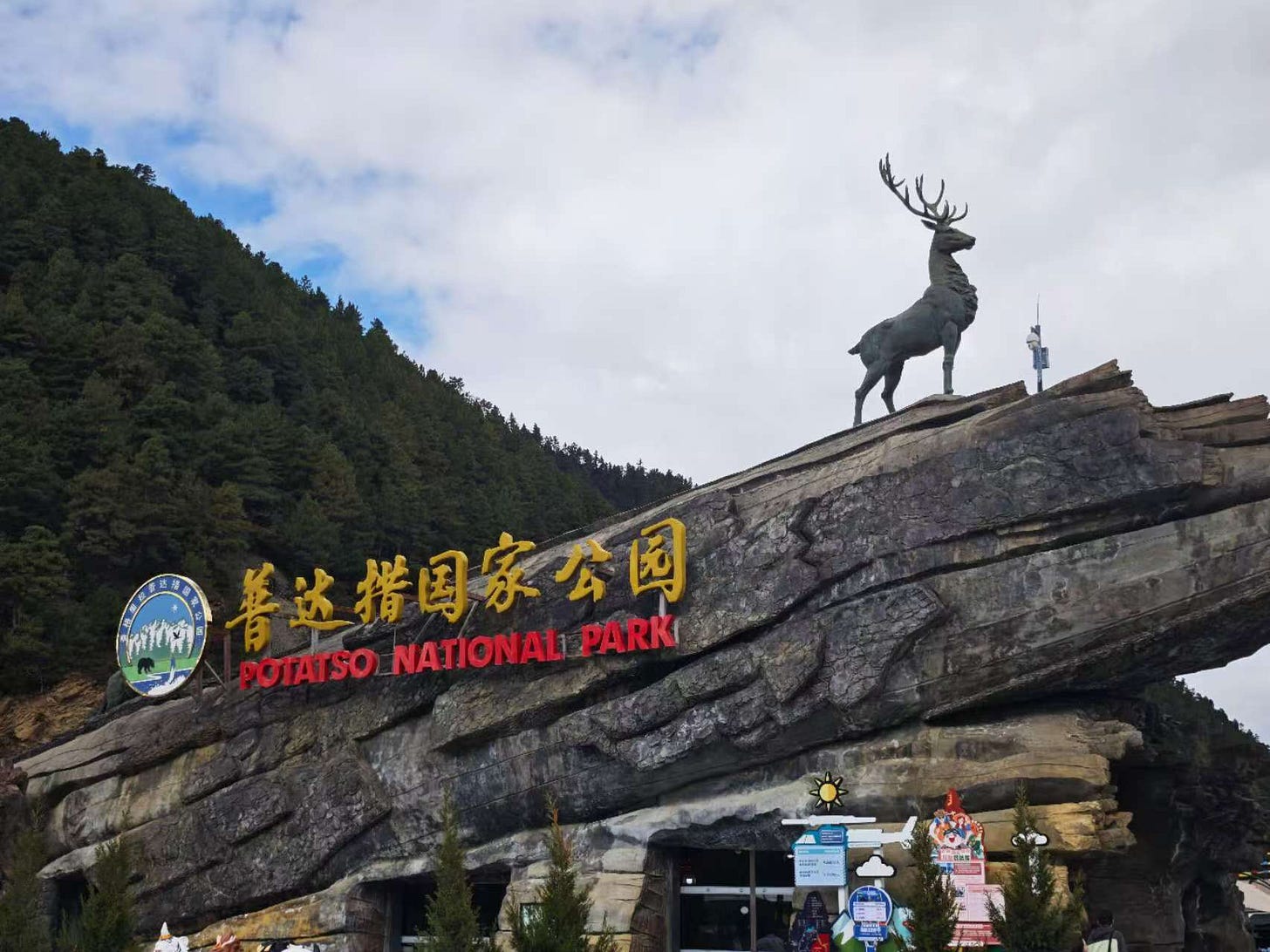
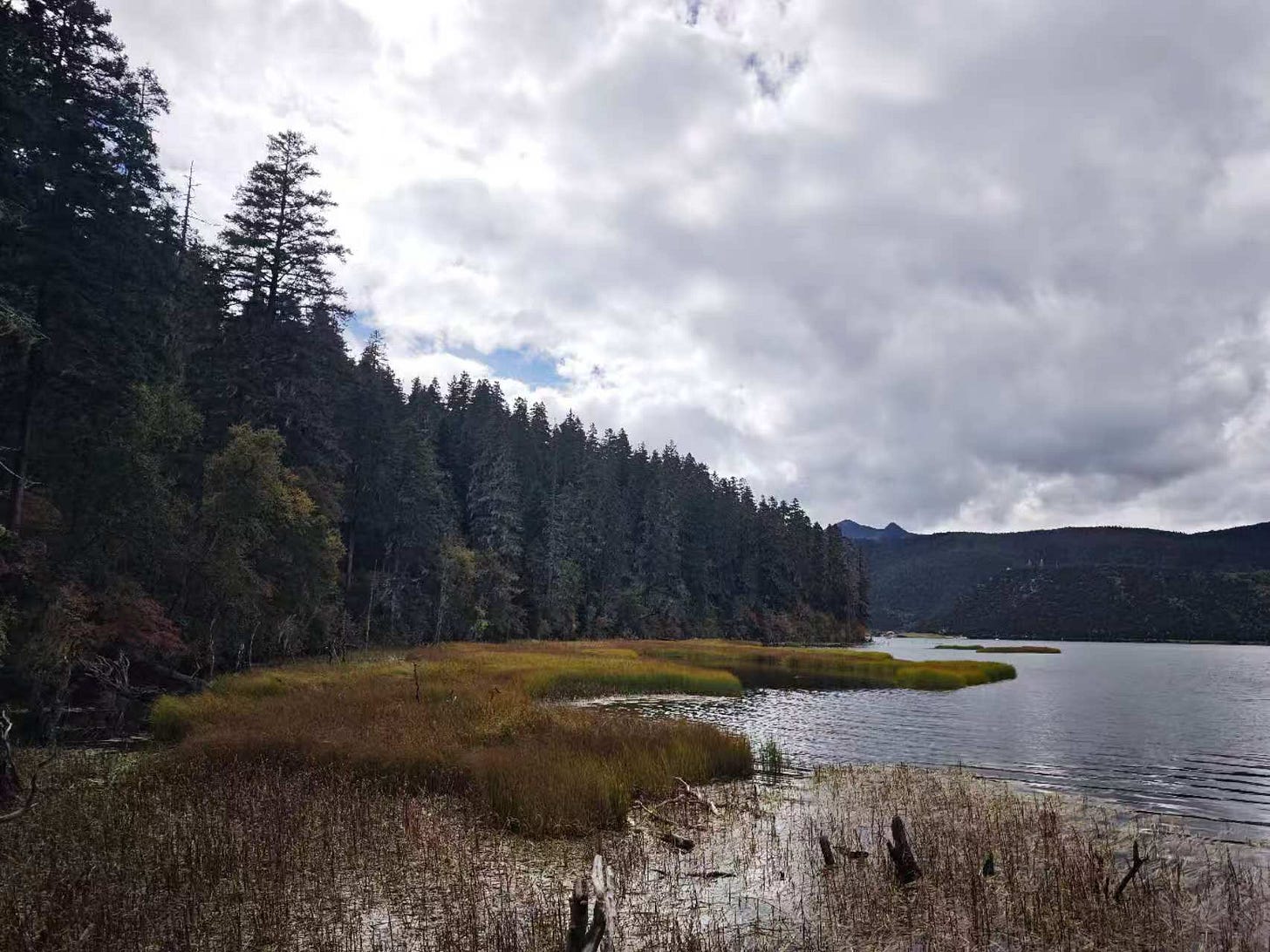
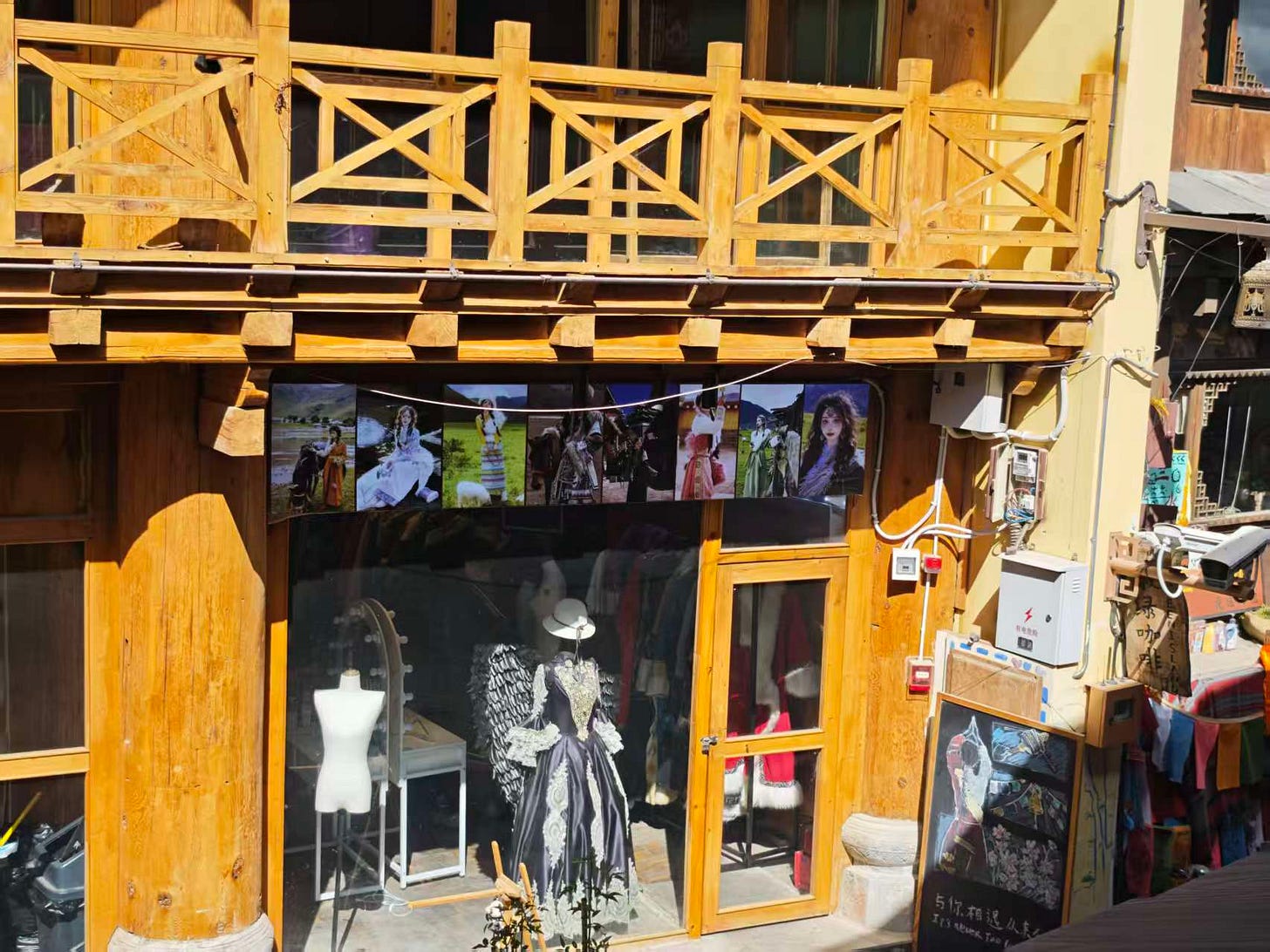
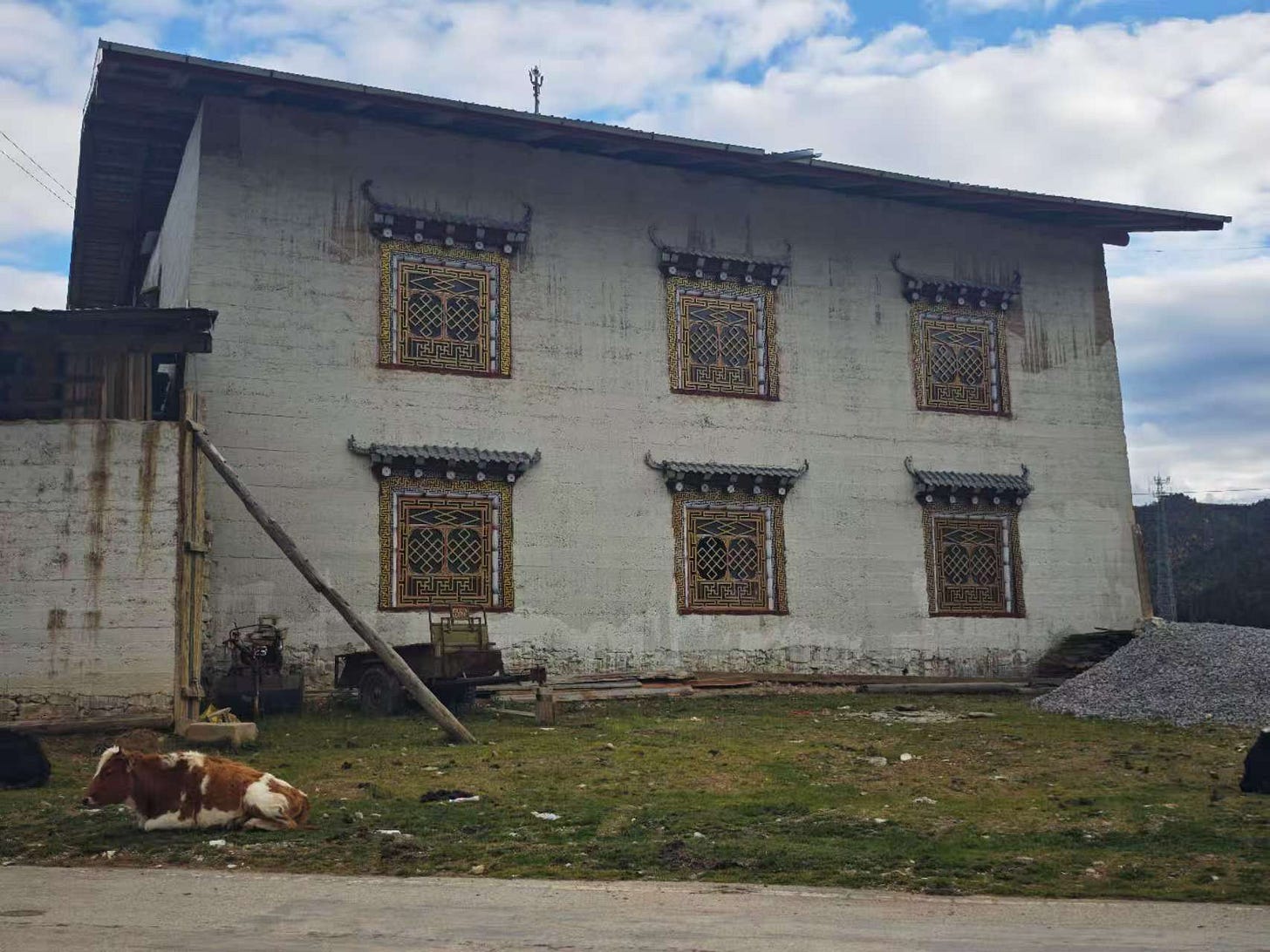
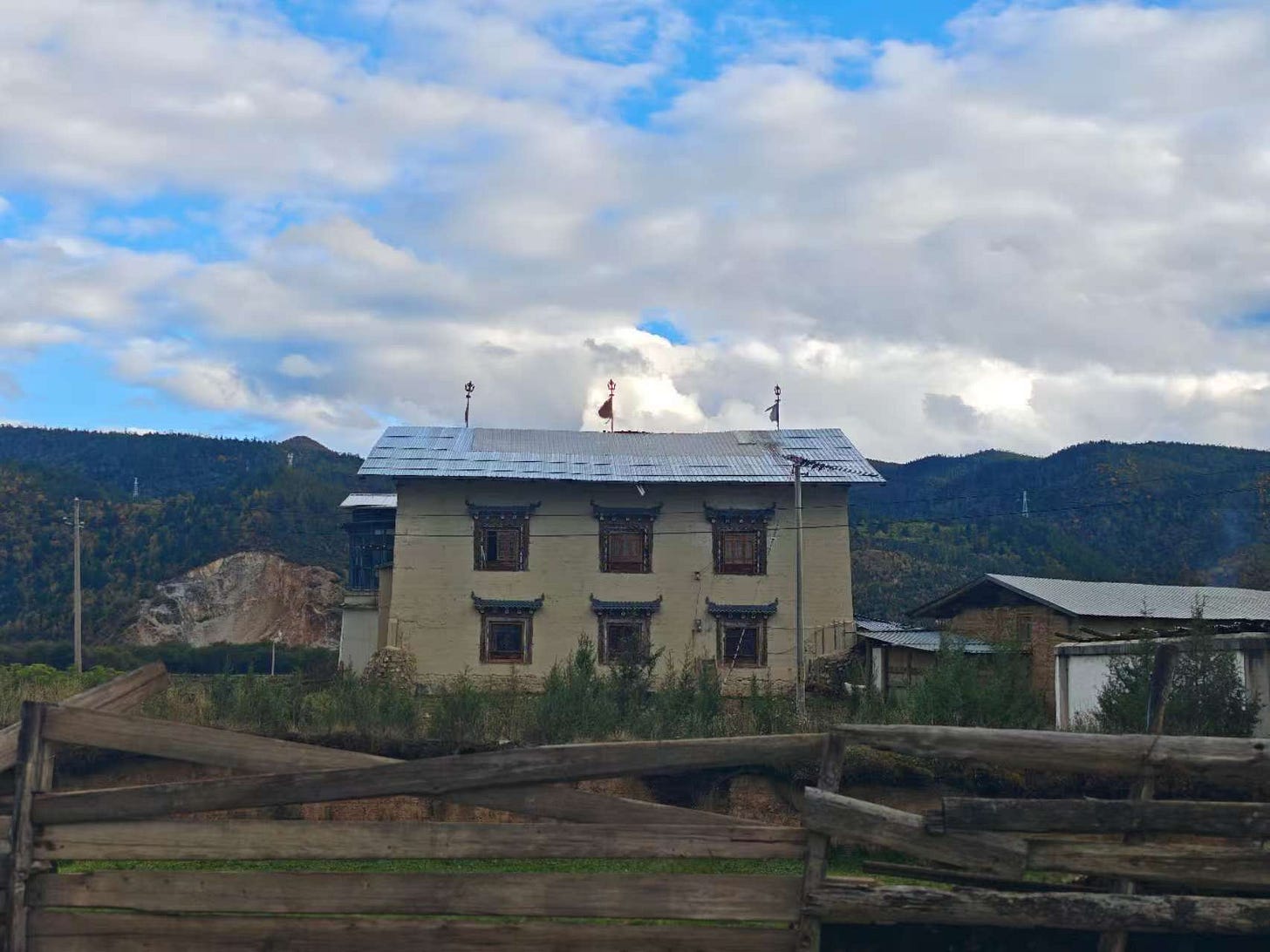
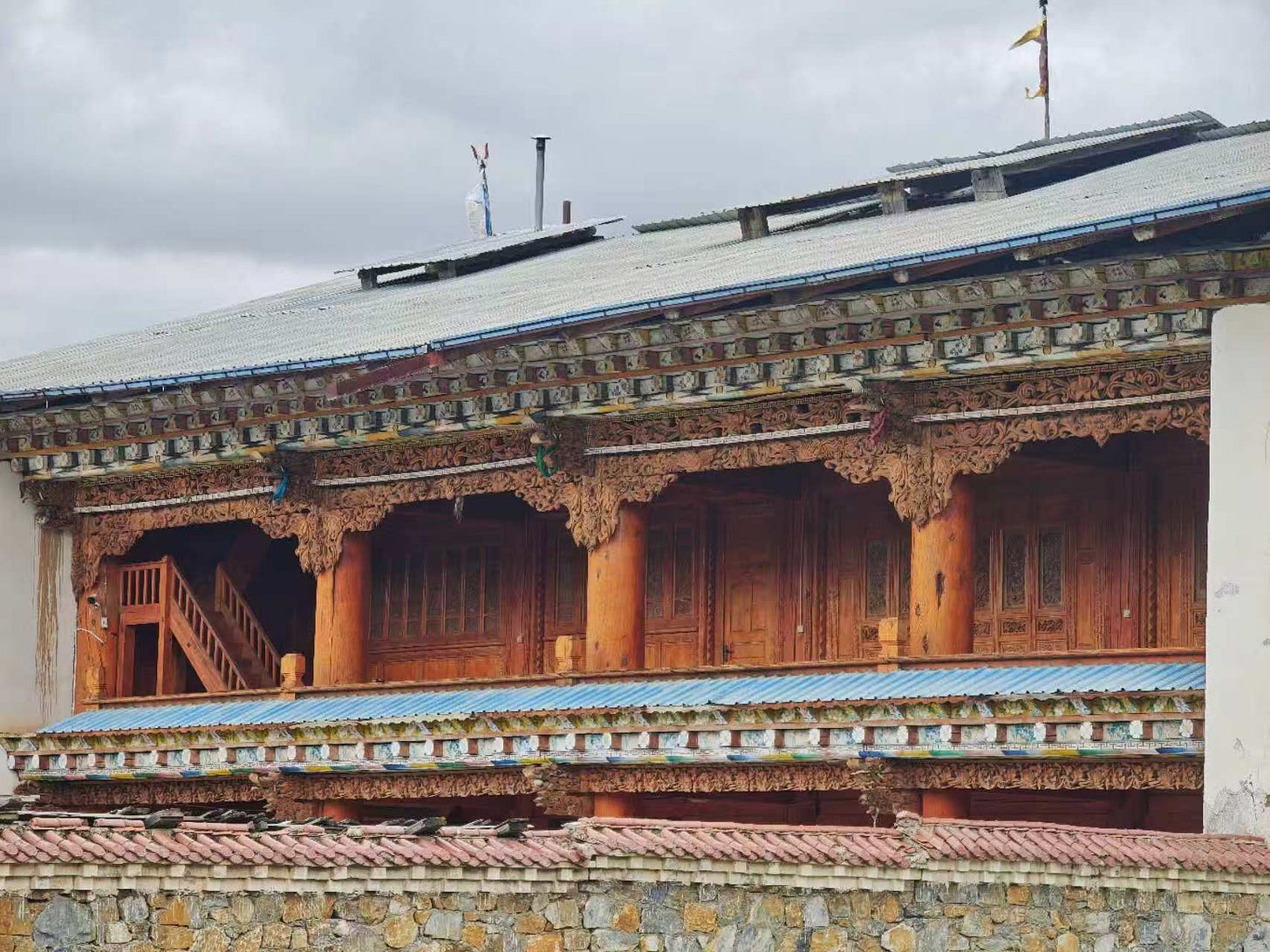
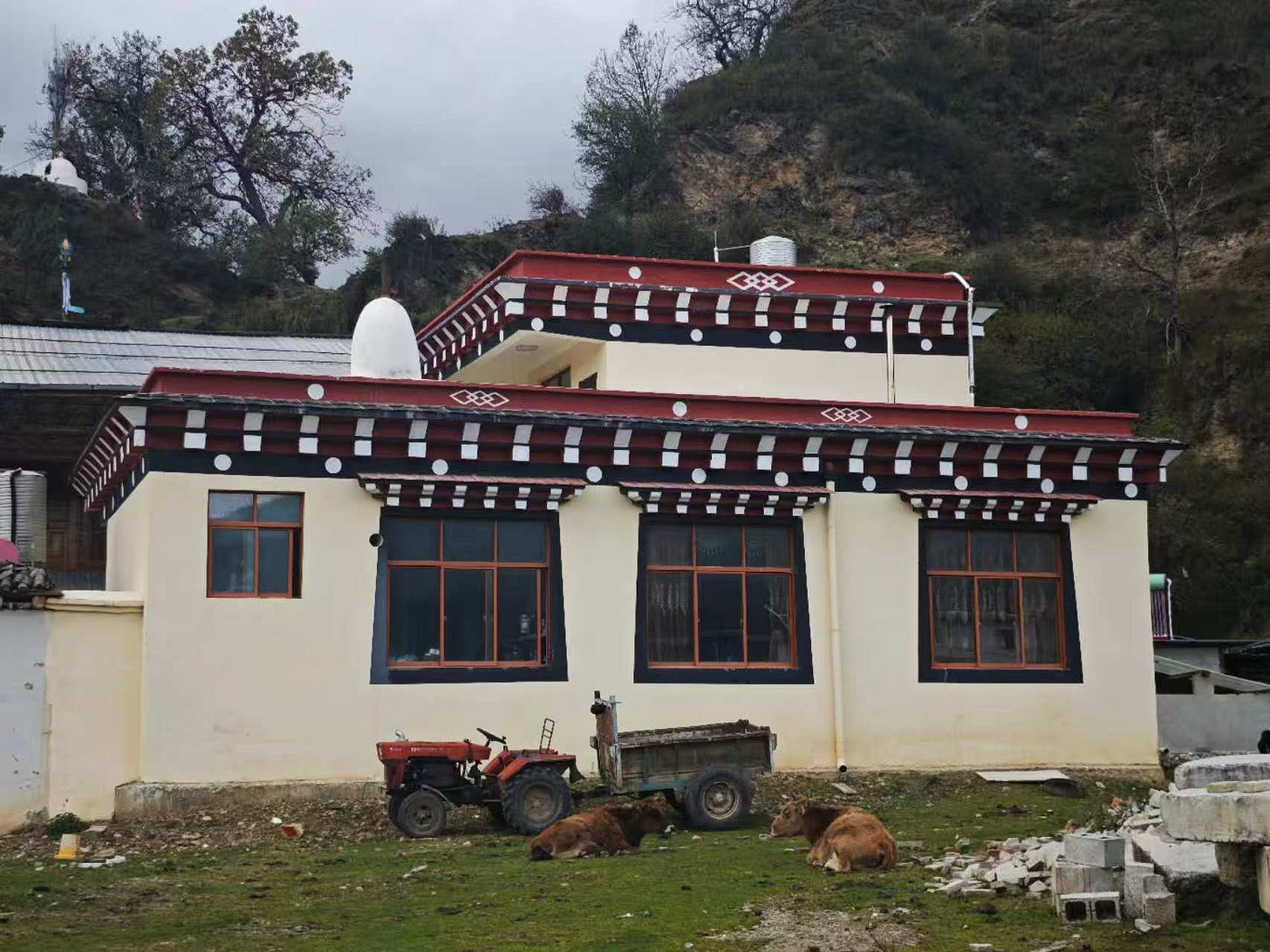
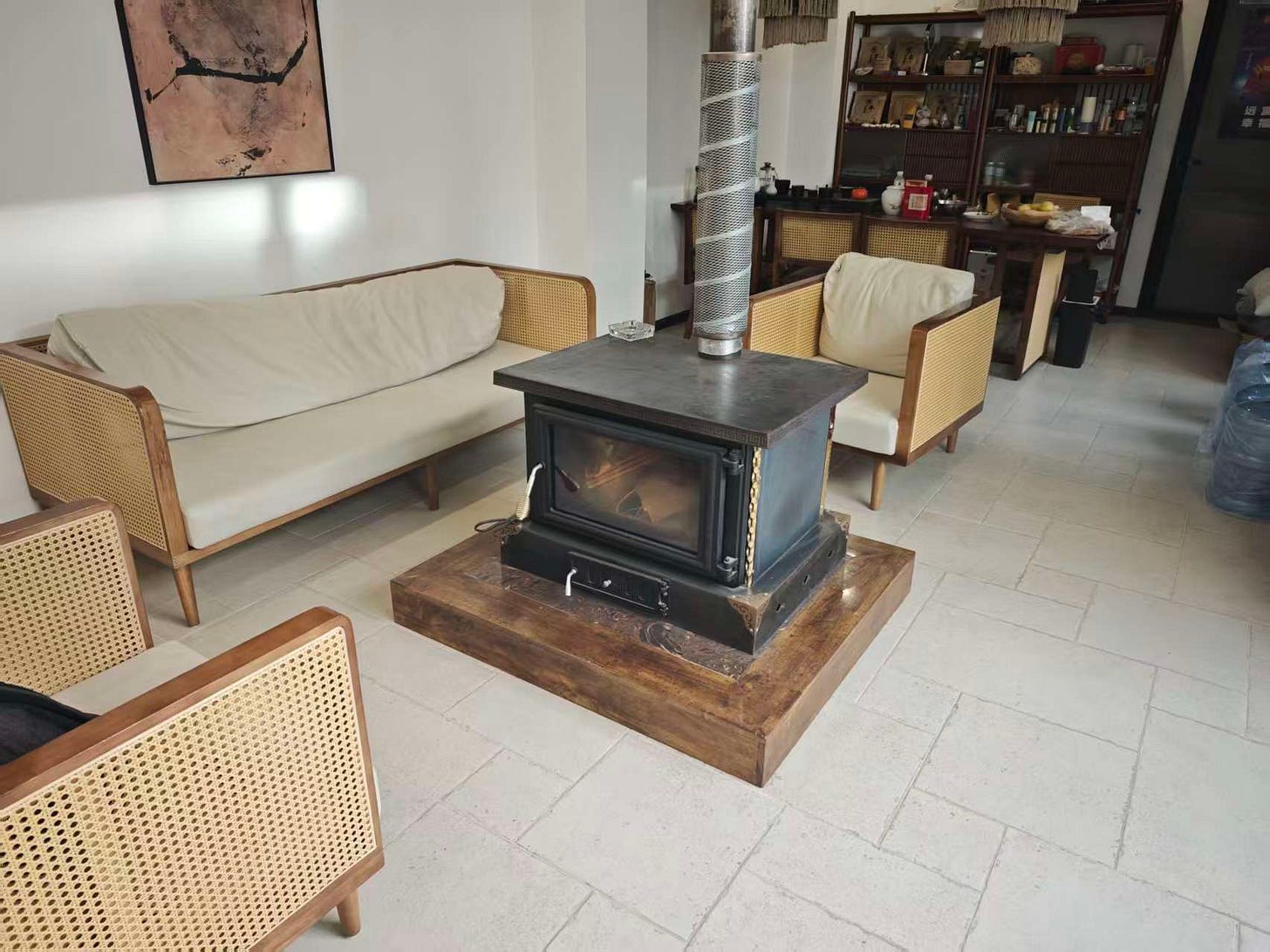
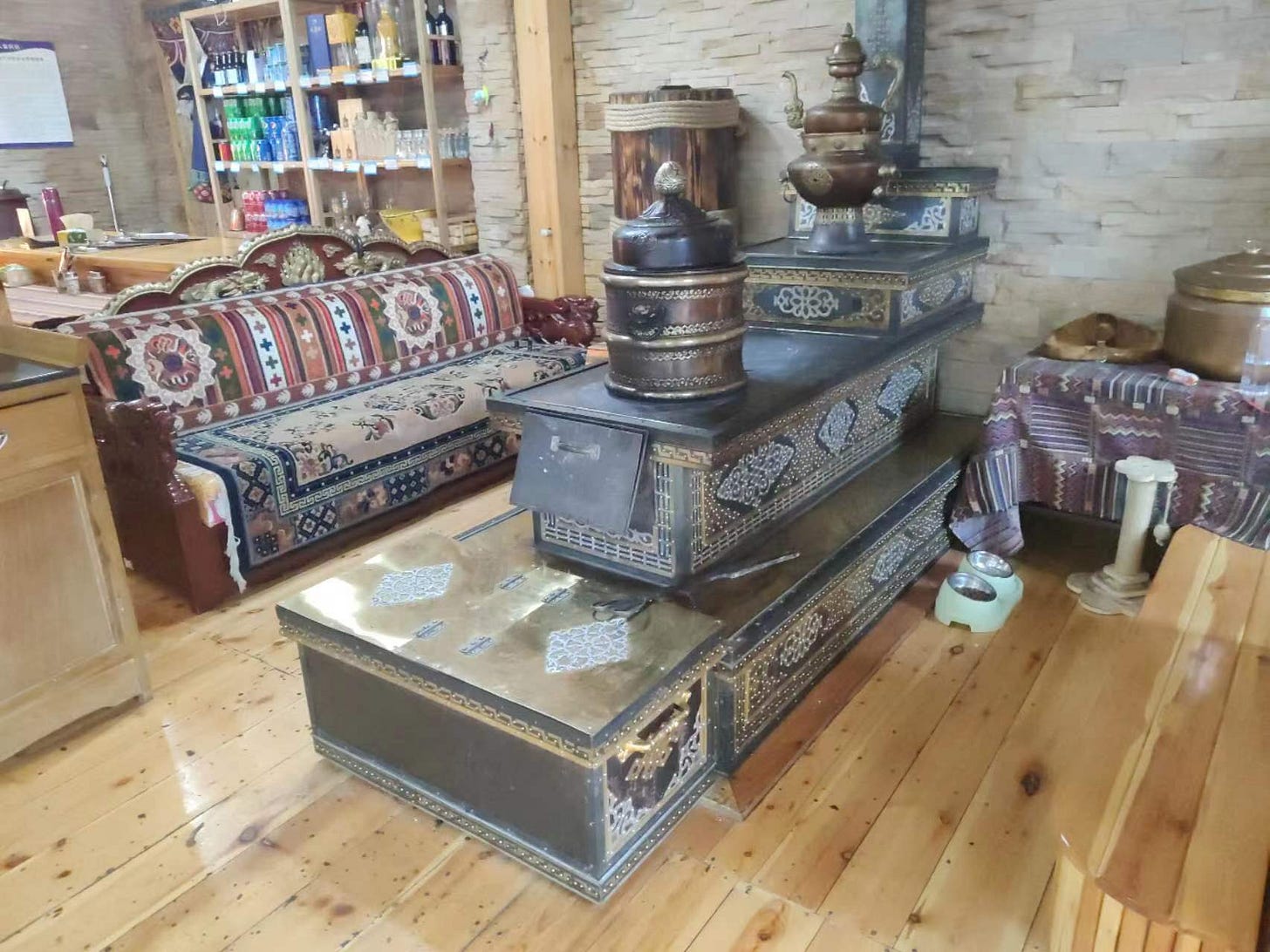
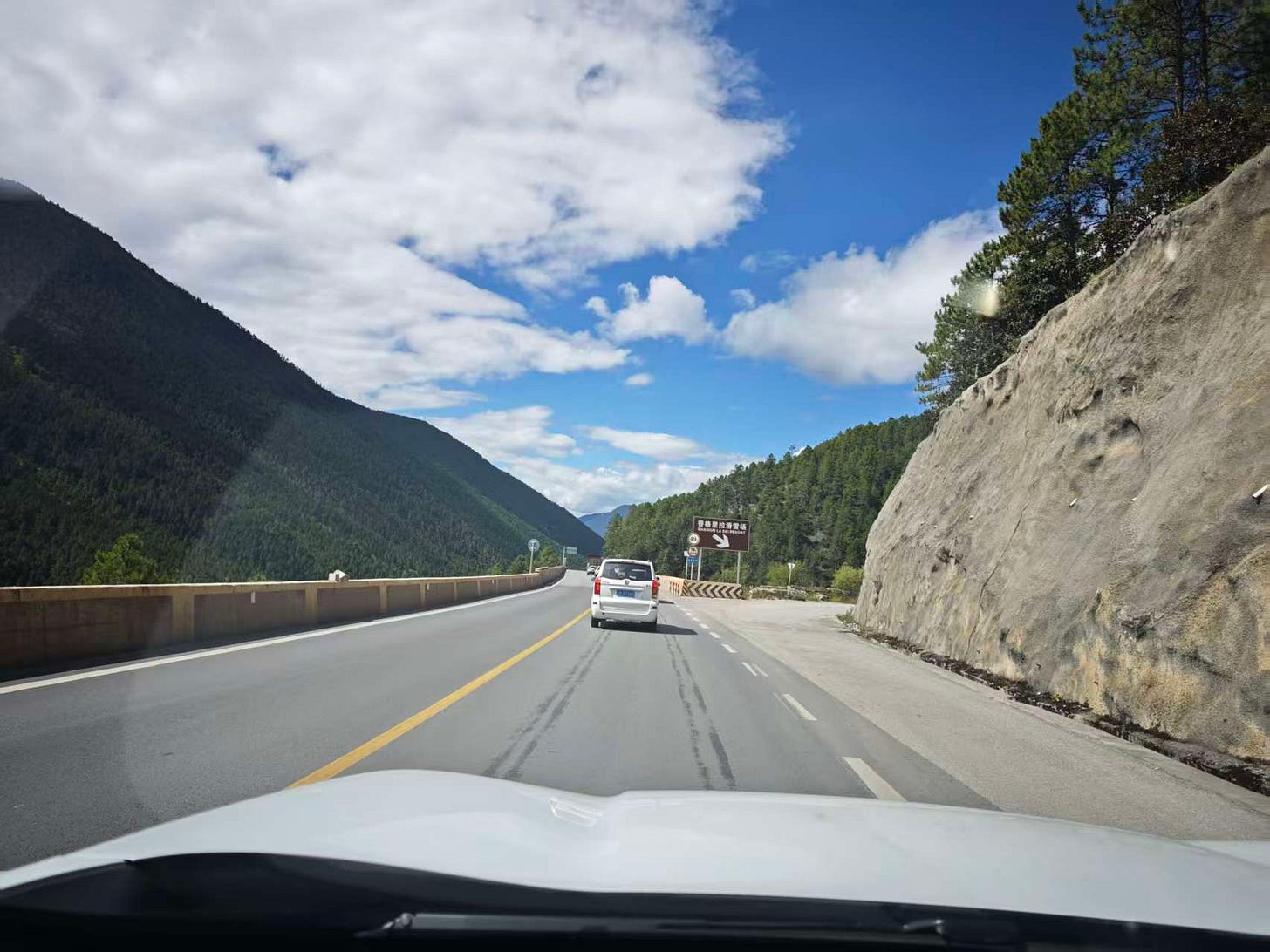
I did the general trip you did this time around 2017, was a really memerable experience for sure, especially trying to drive with a ton of pigs / horses / yaks / dogs / god knows what all running wild on the roads....
If you just think about it in asset terms, all those Tibetan villagers in the area are insanely rich with huge houses with high level decro and hundreds of livestocks to their name.
I did manage to see the golden sunrise for a couple minutes.
Really hope to do it again, but given that I'm just starting with small kids now, probably not gonna happen anytime soon.
I would say that unless you are living in near by provinces, the degree of difficulties of going on this trip is pretty high, certainly more managable than in the past, but still quite high.
Thanks for the trip summary and photos. I visited the area, and then some, in the winter, twenty years ago. The road from Lijiang during a blizzard was treacherous. It's a mixed blessing in having a motorway. It seems that many of China's hidden gems are being opened to greater numbers of people. From the Hongcun villages in Anhui to Huangguoshu Waterfall in Guizhou, which I didn't see since I left due to the traffic jams, over tourism is a real issue.
Note: I am a westerner who lived in Shanghai 15 years and Dali for 4 years. I drove across China 2 times and 7500 kilometers through Xinjiang over 60 days. Prior to living in China my first visit was in 1993.